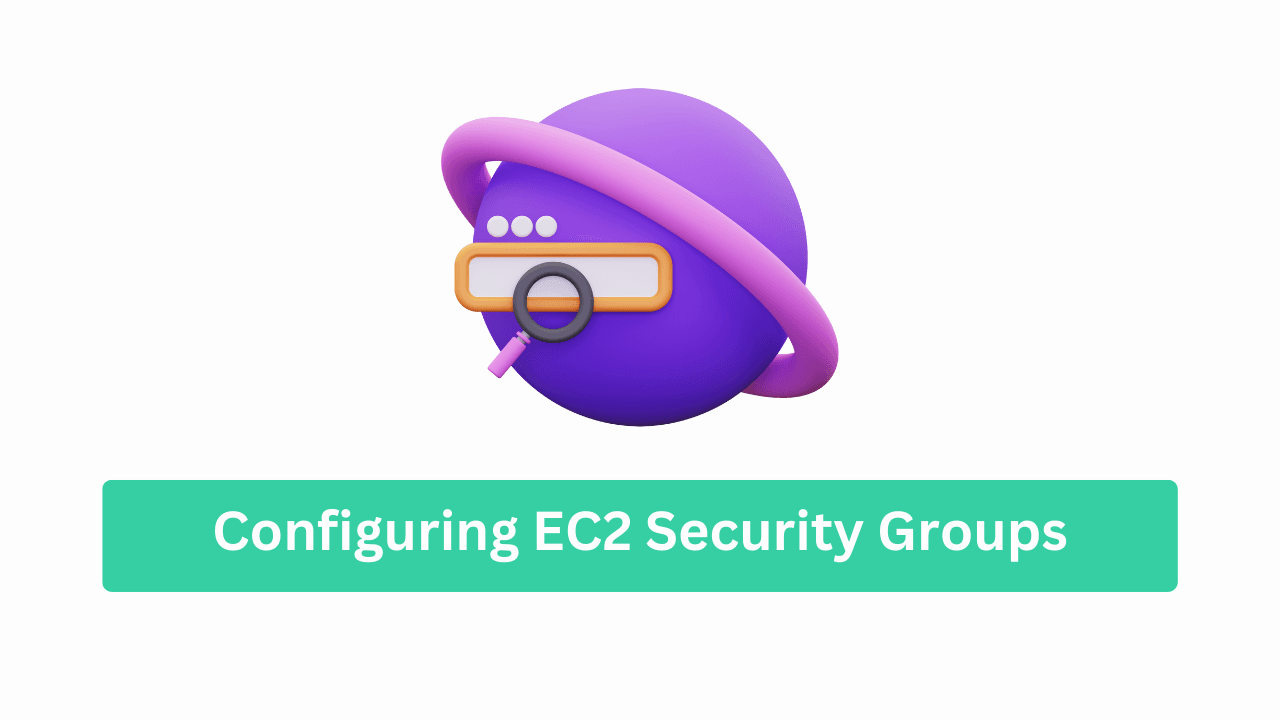Hey Web Codders! 👋 I’m Vikas Sankhla, your coding buddy from Web Codder, and today we’re talking about something super important: Security Groups on AWS EC2. 🔐
Think of it like this:
👉 Your EC2 server is your house. 🏠
👉 A Security Group is the fence + gate 🚧 around your house.
It controls who can come in and out. 🚶♂️🚪
Let’s dive in and make sure your EC2 is safe and sound. 😎
❓ What Are Security Groups?
In simple words:
A Security Group = A virtual firewall 🔥 for your EC2.
It decides:
- ✅ Who can enter (Inbound rules)
- 🚫 Who can leave (Outbound rules)
🛡️ Why Are Security Groups Important?
Without security groups, your server would be wide open 😱—anyone could access it, attack it, or break it.
We use security groups to:
- ✅ Keep the good guys in
- 🚫 Keep the bad guys out
For example:
- You want only YOU to connect via SSH (port 22).
- But you want everyone to visit your website (port 80).
🔍 Understanding Inbound & Outbound Rules
| 🔑 Rule Type | 🚪 What It Controls |
|---|---|
| Inbound Rules | Who can connect to your EC2 (like visitors at your door 🚪) |
| Outbound Rules | Where your EC2 can send data (like you making calls 📞) |
Example:
| Rule Type | Port | Protocol | Source | What It Does |
|---|---|---|---|---|
| Inbound | 22 | TCP | Your IP only | Allows only you to SSH into EC2 |
| Inbound | 80 | TCP | Anywhere (0.0.0.0/0) | Allows anyone to visit your website |
| Outbound | All | All | Anywhere | Allows EC2 to reach the internet |
🛠️ Setting Security Group Rules (Step-by-Step)
1️⃣ Go to EC2 Dashboard
- Open AWS Console
- Click EC2 > Security Groups
2️⃣ Create a New Security Group
- Name: MyWebServerSG
- Description: Security for my web server
- VPC: Choose default (or your VPC)
3️⃣ Add Inbound Rules ➡️
| Type | Protocol | Port Range | Source | Reason |
|---|---|---|---|---|
| SSH | TCP | 22 | My IP | So only you can log in |
| HTTP | TCP | 80 | 0.0.0.0/0 | Allow everyone to visit your site |
| HTTPS | TCP | 443 | 0.0.0.0/0 | Allow secure browsing |
👉 Pro Tip: Use “My IP” for SSH to keep it extra safe! 🔐
4️⃣ Add Outbound Rules ⬅️
By default:
✅ All traffic is allowed. (Good for most apps.)
You can tighten this later if needed.
5️⃣ Attach Security Group to EC2 🖇️
- Go to your EC2 instance
- Click Actions > Networking > Change Security Groups
- Select your new group ✅
Done! 🎉
⚠️ Best Practices for EC2 Security Groups ✅
1️⃣ Least Privilege:
Allow ONLY what’s needed. Don’t open random ports.
2️⃣ Restrict SSH:
Set SSH (port 22) to your IP only. 🚨 Never open to “Anywhere” (0.0.0.0/0).
3️⃣ Use Separate Groups:
One group for web traffic, another for database access.
4️⃣ Review Regularly:
Check your rules often. Clean up unused ports.
5️⃣ Avoid Overlap:
Be clear—don’t have conflicting rules.

1️⃣ EC2 Instance 🖥️
2️⃣ Security Group 🔒
3️⃣ Inbound/Outbound Rules ➡️⬅️
4️⃣ Safe & Secure Hosting! 🚀
✅ Bonus: Common Ports Cheat Sheet
| Service | Port Number |
|---|---|
| SSH | 22 |
| HTTP | 80 |
| HTTPS | 443 |
| MySQL | 3306 |
| PostgreSQL | 5432 |
🚀 Wrap-Up: You’re a Security Pro Now! 💪
Awesome job, coder fam! 🎉 You’ve just learned:
- 🔐 What security groups are
- 🚪 How to control access to your EC2
- ✅ Best practices for safety
Now your EC2 is like a fortress—strong & secure! 🏰
👉 Next up: We’ll dive into deploying a real-world app with perfect security settings.
🎥 Stay tuned & subscribe:



